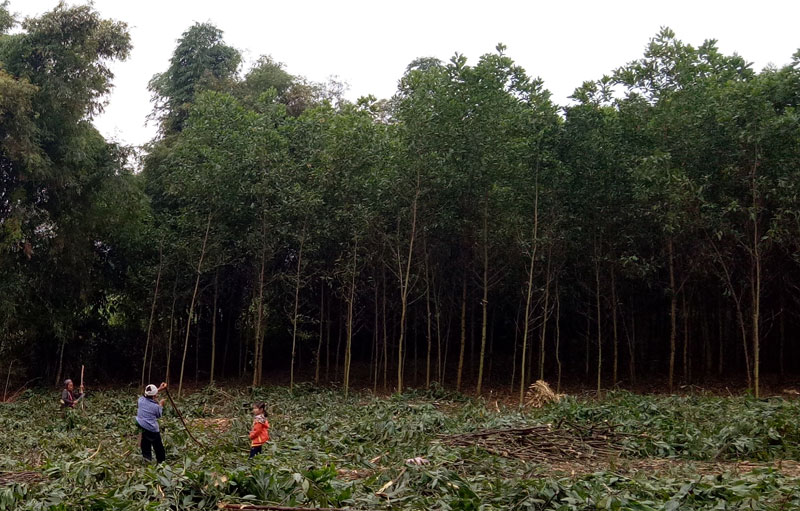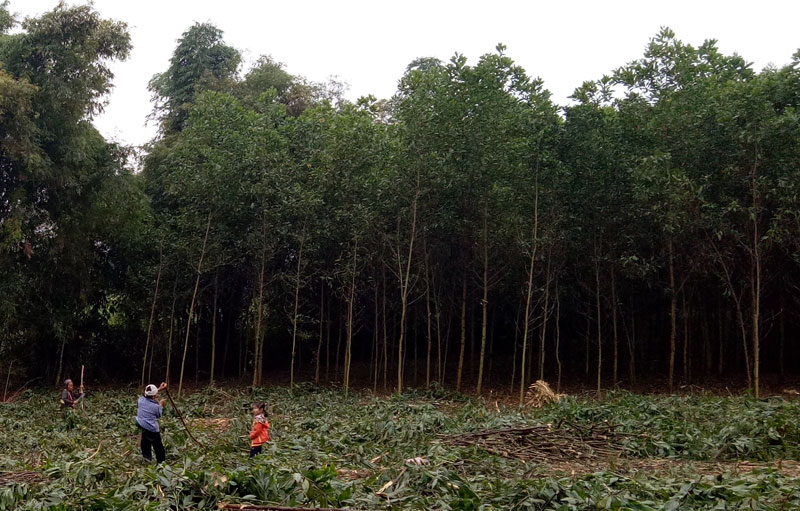


In the early spring, we went to Huong Nhuong
Commune (Lac Son). Afforestation is a promising way to bring spring prosperity
to the people of this land. The commune has 8 hamlets, villages. Forest
plantation movement is developing strongly in the villages of Bung, Biu, Vinl
Thuong, Vin Ha. Mr. Bui Van Chien, Chairman of People's Committee of Huong
Nhuong Commune, said: In 2017, the commune planted more than 100 hectares of
forest; with an area of forest exploitation was over 50 million dongs per
hectare. These stretching forests are thanks to the direction and organization
of committees, commune authorities together with the agreement and consensus of
the local people.

People in Bung Village, Huong Nhuong Commune
(Lac Son) exploiting the acacia forest for average income of 50 million dongs
per ha.
Mr. Bui Van Khanh, Head of Agriculture and
Rural Development Department of Lac Son District, said: Because of the early
recognition, the determination of the advantages and potential of land and
human resources in the locality with open policies to encourage the forestry
development, man families in the district were allocated forest land, which was
enriched from economic forest plantation. In addition to the allocated area,
many households jointly planted economic forests with forestry companies and
forestry farms in the district. Afforestation households also implement economic
models for high efficiency under the forest canopy such as raising pigs, garden
chickens; bees for honey, building a continuous model of VACR ... Thanks to
these economic models, the lives of local people are being increased better. In
addition, Lac Son District has strengthened the socialization of forestry;
implement the land allocation and forest allocation for the local residents to
help raise self - awareness of the people in the protection and enrichment of
forest resources. Up to now, 100% of the forest land has been allocated to
households for caring and management. The localities have built the convention
of forest protection, rational exploitation and thinning, giving high economic
income.
Mr. Nguyen Xuan Truong, Deputy Director of
Provincial Forest Protection Department said: In 2017, the province planned to
plant newly 7,500 ha of forest. Thanks to the initiative of land and seedlings,
by the end of December, districts, cities and forest enterprises in the
province have planted 7,528 hectares of forest and 220,000 dispersed trees of
all kinds; exploiting 320,000 m3 of timber; 2 million firewood; over 16 million
plants with various kinds of barbatus, bamboo, blumei and 9.5 tons of non-timber
forestry products. The forestry production value is estimated at 1,221 billion
dongs. The localities have paid great attention to growing large trees and
indigenous trees, strengthening the planting, tending and protection of
forests. The forests are well protected from tearing, burning and encroaching
on the forest for cultivation. As a result, our province continues to maintain
a stable forest cover of over 51%.